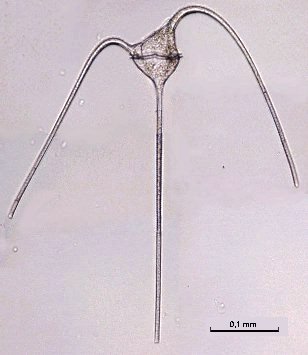 |
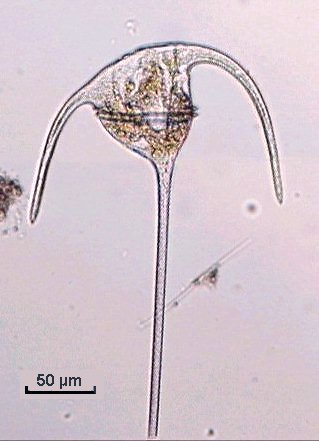 |
| Above left: Ceratium macroceros (?). Above right: Ceratium 'tripods'. | |
|
PART 2 of 3 - Ceratium page |
|
||||
| Maybe the most spectacular
species among dinoflagellates is Ceratium with its elegant shape,
which makes it easy to identify. The cell 'body' has 'arms' more or less
developed in accordance with each sub-species. They are used as floats
but they surely create a great resistance to motion in water and this species
doesn't move too quickly. So these specimens are perfect subjects to observe,
because their movements are slow. Other species, like Gyrodinium
are more difficult to stop!
Some pictures of Ceratium below are made with a montage of four images. |
 |
 |
| Above left: Ceratium macroceros (?). Above right: Ceratium 'tripods'. | |
| Still a Ceratium, but with astonishingly large arms. It maybe Ceratium longipedes? Another species with short arms is shown upper right…. |
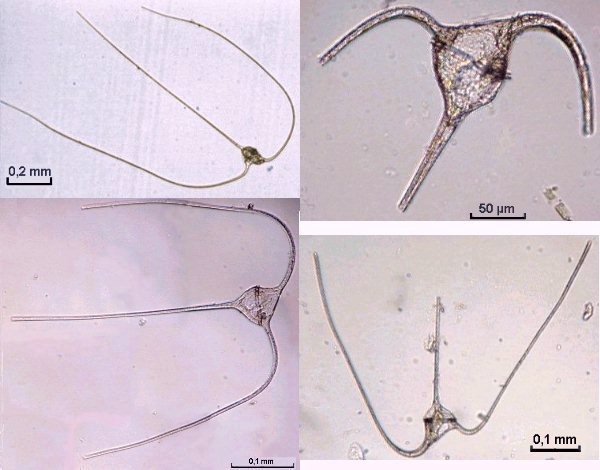 |
| Ceratium furca: Two specimens. | 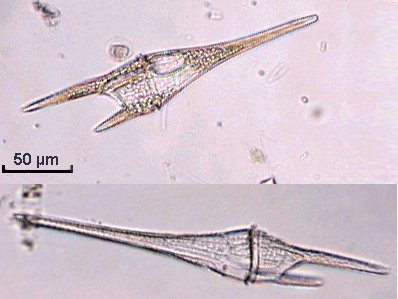 |
 |
Ceratium candelabrum |
| Ceratium fusus: It well deserves its name with its elongated shape. | |
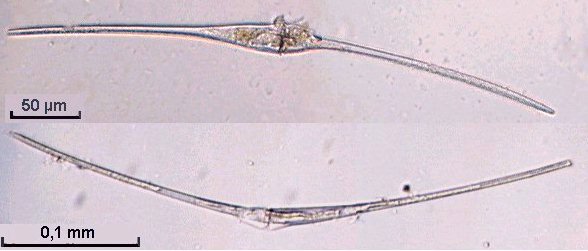 |
| Don't confuse the above with Ceratium biceps which is larger! (Picture made with five images). |
 |
| Two other sub-species: Ceratium falcatum and below it Ceratium longirostrum. |
 |
| Other species include Ceratium lineatus with a more hydrodynamic shape: The enlarged view (40x objective) on the right below shows the long flagellum (arrowed) running in the groove or rather the loop it makes. Note the posterior flagellum in the first picture (15x). | |
 |
 |
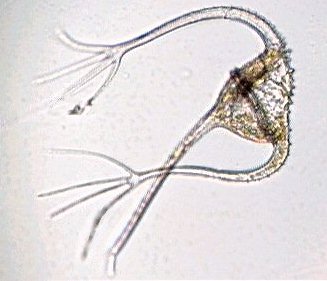 |
The last species, but nontheless intriguing, is Ceratium ranipes which have arms looking like frog's legs ! |
| It seems that Nature has
made many 'variations' for a Ceratium's shape!
Reproduction is accomplished by splitting of the body and new individuals remain for some time attached to the first one as shown in the picture below. Notice in this species, the sort of welded plates making up the body. Another reproductive method is the formation of resistant cysts when environmental conditions become unfavorable. |
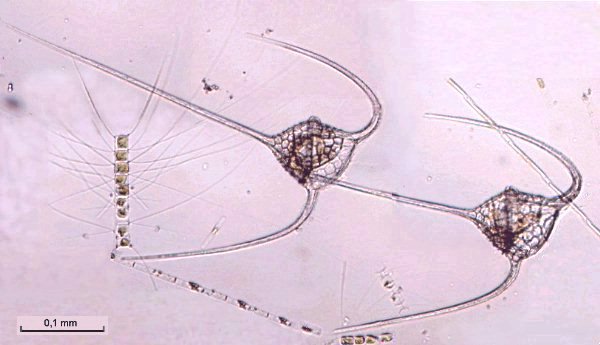
Image below: C. candelabrum with
detail of flagellum
|
| But Ceratium is ONLY one genus among the dinoflagellates: To see other strange specimens, go to page 3. |
|
|
|
|
Microscopy
UK Front Page
All drawings and photographs © Jean-Marie Cavanihac 2001 Published in the September 2001 edition of Micscape Magazine. Please report any Web problems or offer general comments
to the Micscape
Editor,
Micscape is the on-line monthly magazine of the Microscopy
UK web
|